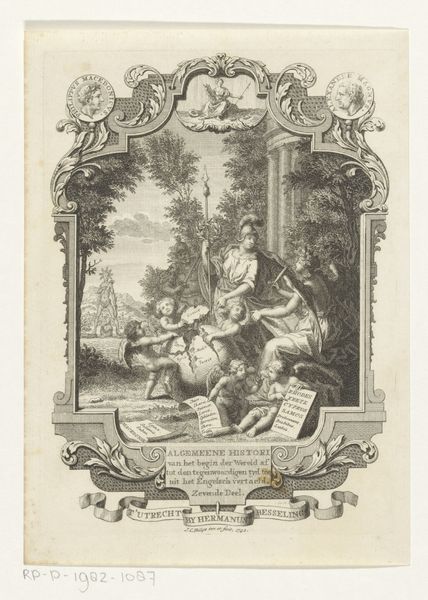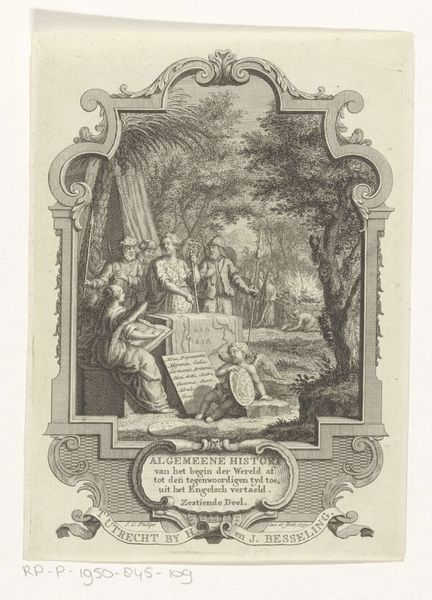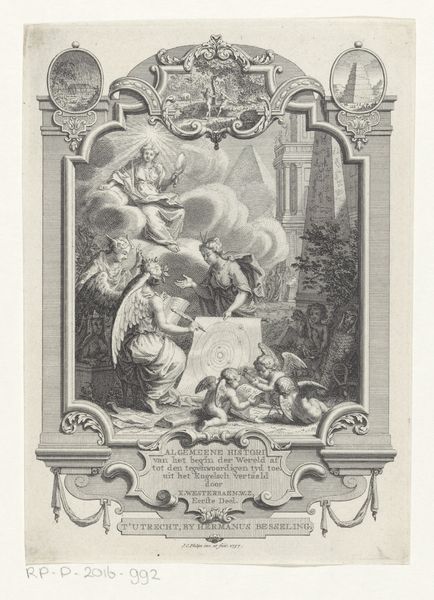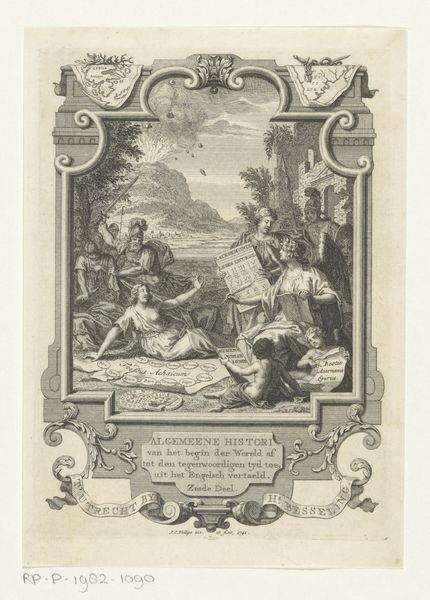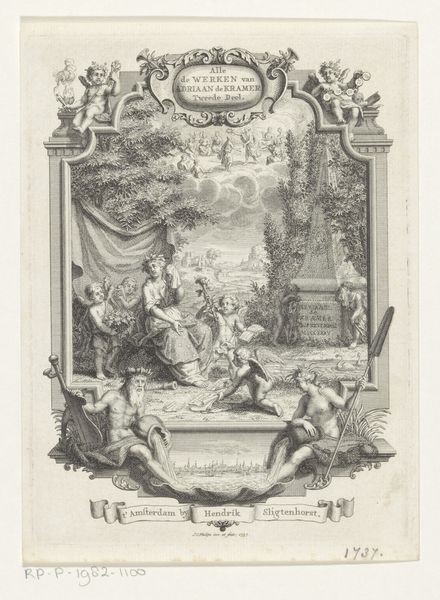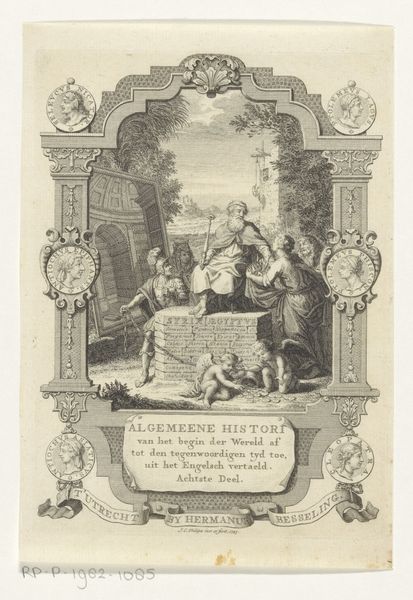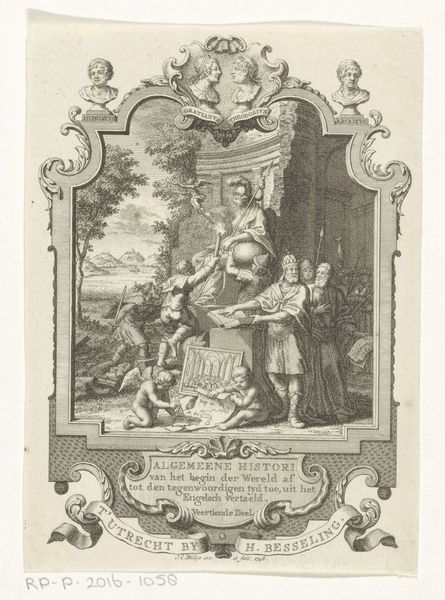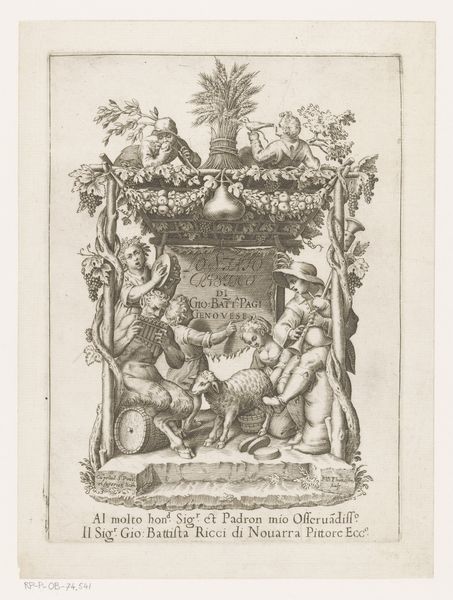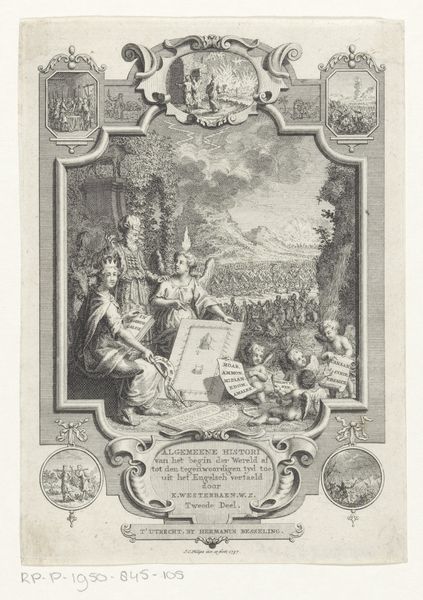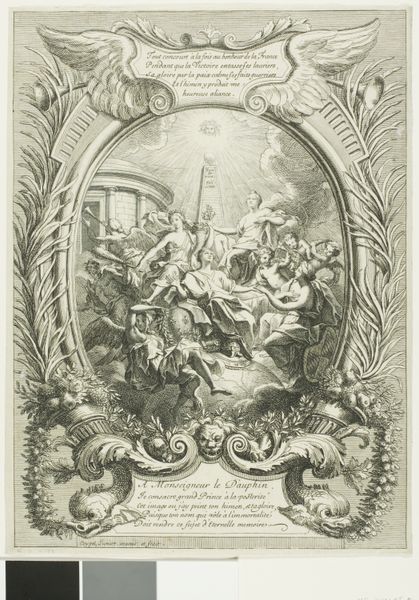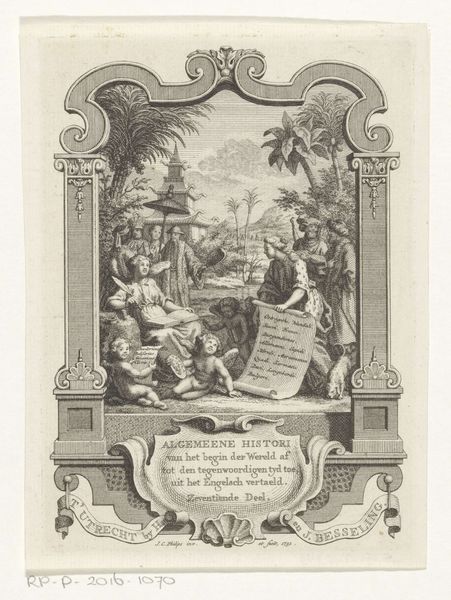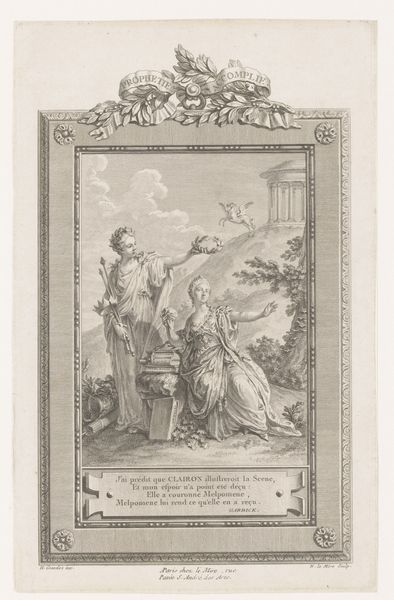
print, engraving
#
allegory
#
baroque
# print
#
pen sketch
#
old engraving style
#
history-painting
#
engraving
Dimensions: height 170 mm, width 121 mm
Copyright: Rijks Museum: Open Domain
Curator: What strikes me immediately about this engraving, dating from 1740, is the sheer density of its imagery—so much to unpack! Editor: I agree; it has a layered feel. Looking closer, the “Cartouche with Allegory on the History of the Greeks” by Jan Caspar Philips feels almost theatrical in its composition. You've got these draped figures, cherubic forms, classical architecture—it feels very Baroque in that sense. Curator: Absolutely, the Baroque style is prominent, not only in the ornate border around the central image but also in the dramatic posing of the figures and the elaborate drapery. These prints served multiple functions; in this case, acting as frontispieces to books or other publications. These often served as powerful tools for visually summarizing a text's contents or argument. Editor: Yes, the central figures immediately telegraph a story about knowledge and antiquity. I’m especially drawn to the scroll with archaic writings presented front and center by an ethereal muse figure, surrounded by angelic putti. What story is being told here? Curator: Well, this print likely served as the opening illustration for a history book on Greece. Allegorical figures were common at the time for symbolizing abstract concepts. We see History herself writing in a book, a common representation for that particular allegory, in concert with several putti guiding or assisting her in some way. Consider the cultural context: Classical antiquity was considered the cradle of European civilization, which imbued these symbols with substantial cultural weight. Editor: That resonates deeply. These symbols—the classical robes, the column, even the pen—evoke an idealized past. It suggests a continuous line from ancient wisdom to the present. Note also, these medallion portraits bordering the central panel act as emblems for a whole host of signifiers. It's fascinating how the image weaves this complex tapestry of symbolic associations. Curator: Precisely. And understanding that visual language opens up the discourse the artist sought to engage with—to elevate contemporary understandings of European power, intellectual rigor and self-understanding, all routed in this history and inheritance from antiquity. Editor: It gives one a sense of history being an active, constructed process. Thanks for that deeper context. It certainly reframes my perspective on how this print communicates with its viewers. Curator: And for me, thinking about how these prints functioned reminds us of how critical they were for disseminating knowledge at the time. It offers insight into the print’s lasting visual and symbolic resonance.
Comments
No comments
Be the first to comment and join the conversation on the ultimate creative platform.
